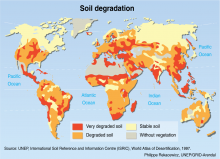Environmental Fate of Soil Applied Neonicotinoid Insecticides in an Irrigated Potato Agroecosystem
Since 1995, neonicotinoid insecticides have been a critical component of arthropod management in potato, Solanum tuberosum L. Recent detections of neonicotinoids in groundwater have generated questions about the sources of these contaminants and the relative contribution from commodities in U.S. agriculture. Delivery of neonicotinoids to crops typically occurs as a seed or in-furrow treatment to manage early season insect herbivores. Applied in this way, these insecticides become systemically mobile in the plant and provide control of key pest species. An outcome of this project links these soil insecticide application strategies in crop plants with neonicotinoid contamination of water leaching from the application zone. In 2011 and 2012, our objectives were to document the temporal patterns of neonicotinoid leachate below the planting furrow following common insecticide delivery methods in potato. Leaching loss of thiamethoxam from potato was measured using pan lysimeters from three at-plant treatments and one foliar application treatment. Insecticide concentration in leachate was assessed for six consecutive months using liquid chromatography-tandem mass spectrometry. Findings from this study suggest leaching of neonicotinoids from potato may be greater following crop harvest in comparison to other times during the growing season. Furthermore, this study documented recycling of neonicotinoid insecticides from contaminated groundwater back onto the crop via high capacity irrigation wells. These results document interactions between cultivated potato, different neonicotinoid delivery methods, and the potential for subsurface water contamination via leaching.










